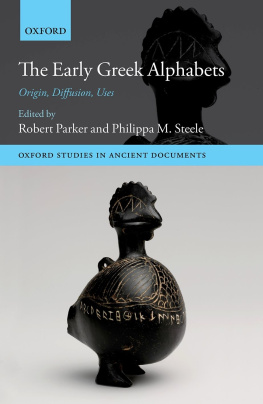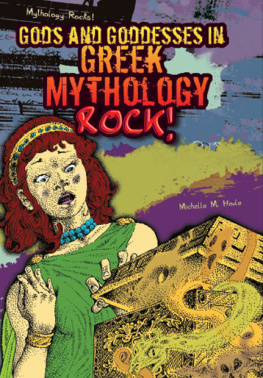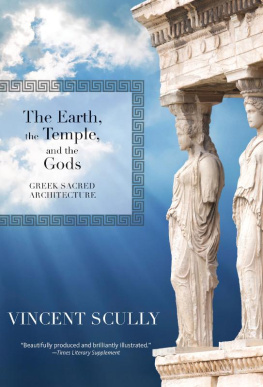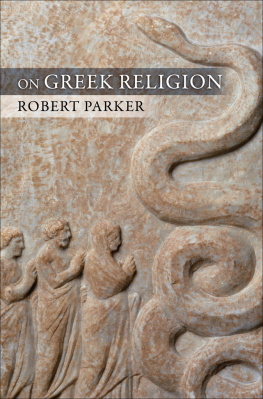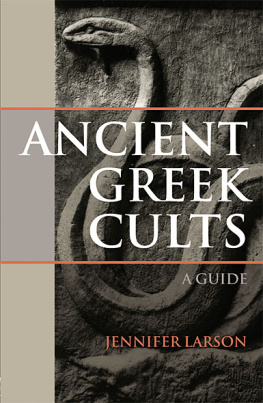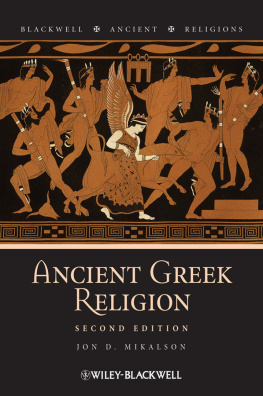PREFACE
This book has its origin in three of the six Sather lectures that I had the honour of delivering in the spring of 2013. Those three lectures form the core of what are now chapters 2 and 3 and appendix H. Lectures that sought to be accessible have expanded into a somewhat intricate treatise, and I am grateful to the Sather Lectures committee and the press for accepting this hybrid product in the Sather Classical Lectures series.
Any reader of Sather prefaces has heard of the fabled friendliness and hospitality with which the professor is received; one could give a graduate student interested in rhetoric the assignment of tracing the development of the variations on the theme over the years. In an idle moment I investigated its origin, and discovered the first occurrence in the third of the published volumes, T.R Glovers Herodotus of 1924: this book, Glover writes, will recall pleasant days spent in a community of ten thousand students, with men who added to the ties of kindred studies those of a signal kindness. I can warmly echo and expand Glovers remarks in recording my gratitude to both men and women who did indeed add to the ties of kindred studies those of a signal kindness; and so I can confirm, what classicists sometimes doubt, that some commonplaces are common because they are true. I hope it is not invidious to single out for thanks the late Tony Bulloch, Susanna Elm, Mark Griffith, Eric Gruen, Tony Long, Emily Mackil, Donald Mastronade, Trevor Murphy, Kim Shelton, and especially John Ferrari, chair of the department during my stay, and Ron and Conny Stroud; from outside the department, Robert Goldman and Martin Schwartz; and for much practical assistance, Nancy Lichtenstein. I remember with affection the participants in my graduate seminar. I am also very grateful for warm hospitality and helpful suggestions to hosts and audiences at the University of California Davis, Los Angeles, and Santa Barbara, Seattle University, Stanford, and Yale. I owe advice on particular problems to Jim Adams, John Baines, John Barton, John Healey, Charlotte Potts, Jo Quinn, Beth Richert, Richard Stoneman, and Elisabeth Tucker. At the press I thank my editor, Eric Schmidt, his assistant, Maeve Cornell-Taylor, and project editor Cindy Fulton for friendly guidance, and, for her meticulous copy-editing, Marian Rogers. I am indebted, too, to the University of Oxford for granting me the leave that allowed me to visit Berkeley, and more especially for the academic home that (with two of its colleges, Oriel and New) it has provided me with for almost fifty years.
1
Names and Epithets
By the third century B.C. , gods bearing Greek names were worshipped from Spain to Afghanistan. This book is about aspects of that divine diaspora. Its particular emphasis is on names and naming, one of the two principal aspects (iconography is the other) under which that diffusion is revealed to us. Later chapters will enquire how ways of addressing and referring to gods in Greek developed outside old Greece and over time, two processes that can scarcely be kept separate. But first some account of those naming practices in the period when they were relatively isolated from such external contact is needed. The isolation was only relative because contacts always existed, but a real change occurred when use of the Greek language spread and non-Greek gods had to be named in Greek. This chapter will attempt an outline of the status quo ante.
The obvious starting point is the names of the gods themselves, but first the concept of naming the gods must be complicated a little. In studying divine names, one needs, at a minimum, to distinguish ways of referring to the gods from ways of addressing them. and certain gods of mysteries are never referred to except by titles.
Another distinction is that between prose and verse. Many epithets are given to gods in poetry but not in cult; there are also cases such as that of Agesilas/Agesilaos (Leader of the People), an alternative name, probably euphemistic, for Hades which had a long life in poetry but is unattested in prose. The distinction is not between literature and real belief, because, for instance, the periphrastic impulse present in Agesilaos is certainly an expression of religious feeling. It is a difference rather of register, between language that an ordinary Greek would recognise and respond to and that which he would actually use.
As a rule, gods had one name each. Though it was a title of honour for a god to be many-named, what was meant by this was in fact many-epitheted; the multiple variant names of Akkadian gods lack a Greek equivalent. Phoibos and Pallas are not so much alternative as additional names for Apollo and Athena, regularly used in conjunction with the main name. Kore is not a second name for Persephone of equivalent standing, but, as just noted, a euphemistic alternative. The same is probably true of Plouton (deriving from , wealth) as an alternative name for Hades.
In contrast to some ancient polytheisms where gods are named from their functions,
At a lower level in the divine hierarchy, speaking names do appear. The Nymphs as a group are a collectivity of brides, nymphai, and many female figures of that level of power have transparent names: the Praxidikai, Justice-Exacters, for instance, or Kourotrophos, Child-Nurturer, sometimes a minor independent goddess, sometimes an epithet of some larger figure. A minority of cult heroes too have names indicating a function: Matton, Kneader, and Keraon, Mixer, culinary heroes in Sparta; the Attic Sosineos, Save Ship; the Thessalian Poliphylax, City Guard (honoured by human city guards); and others.






